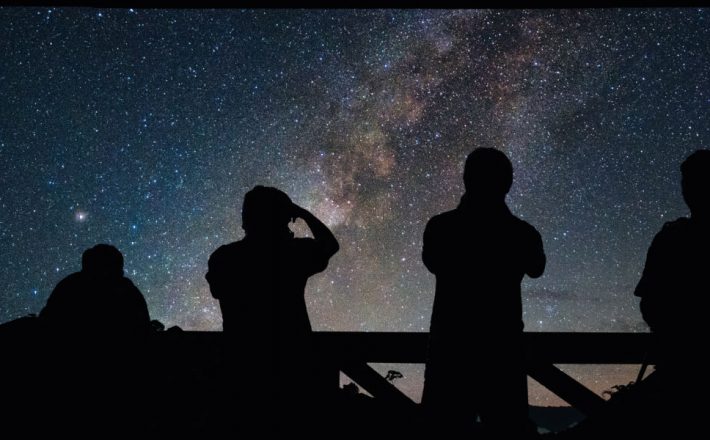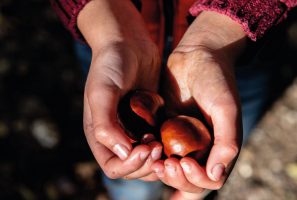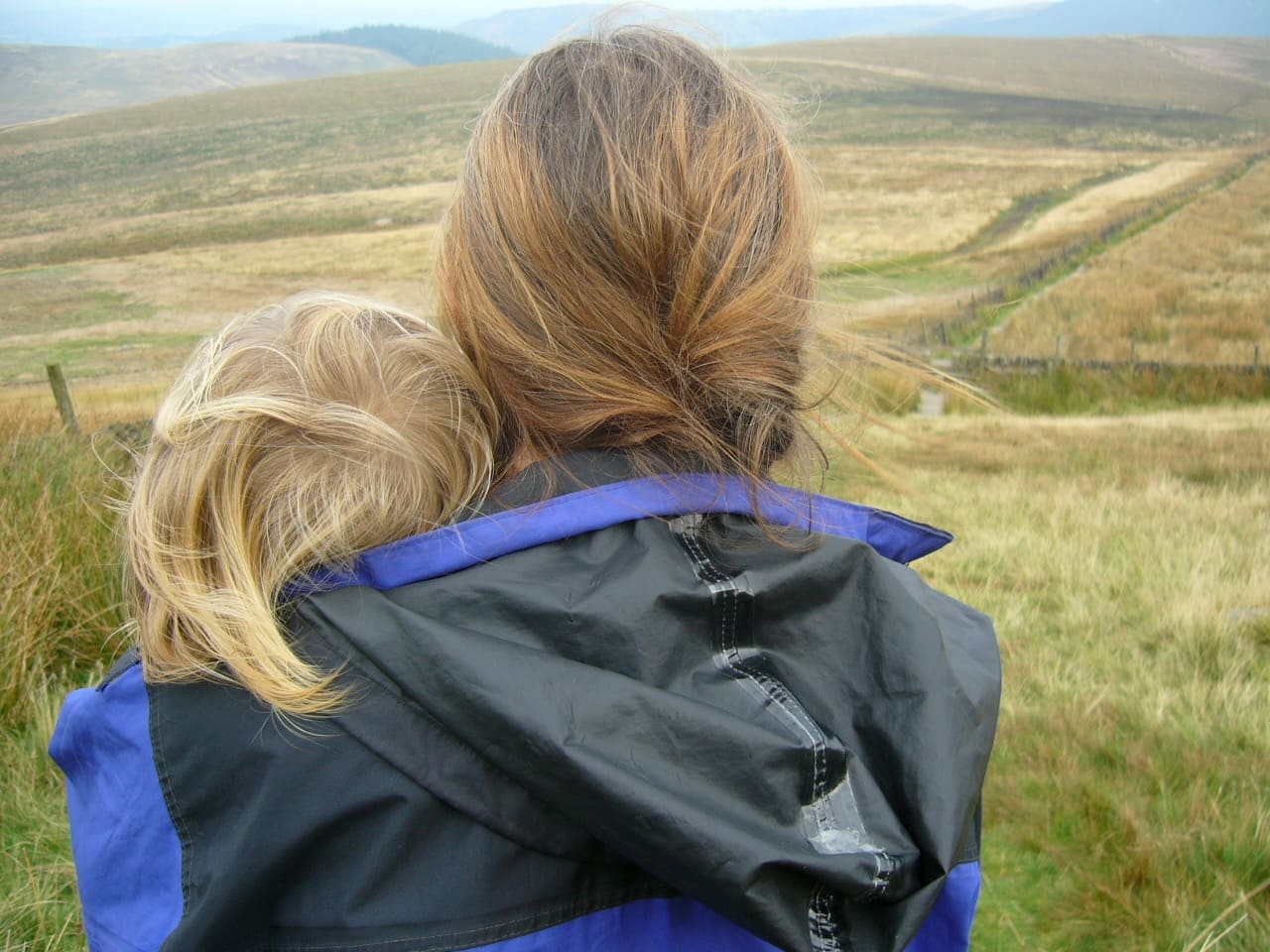Dark Skies in Herefordshire
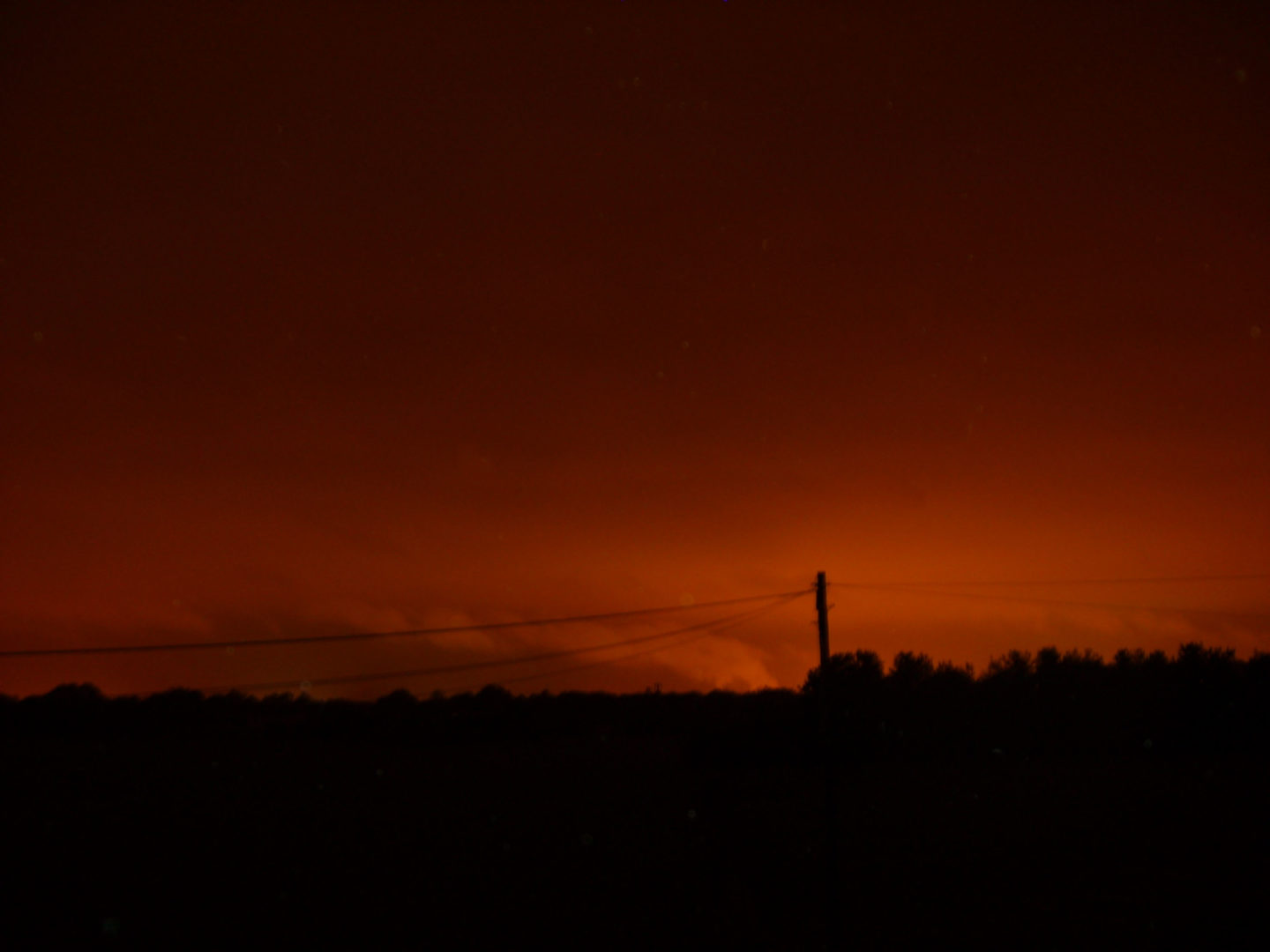
Light pollution is excess artificial light that shines where it is not wanted or needed. Sometimes there are very good reasons of safety and security for night-time lighting. Many people work, and travel in the dark but do all of these lights need to be on all of the time?
Increasing Dark Skies in Herefordshire
In 2019, CPRE released the most comprehensive satellite maps ever of England’s light pollution and dark skies. Herefordshire emerged as the county with the darkest skies on average. However, when examining which counties boast the highest percentage of pristine night skies untouched by light pollution, Herefordshire slipped to only the third darkest. You can explore the detailed map yourself here.
In January 2024, Yolande joined our Executive team bringing with her a shared passion for preserving our beautiful countryside with a focus on enhancing dark skies in Herefordshire through her leadership of our Dark Skies Herefordshire (DSH) project.
DSH provides training for local Parish Council Environment Working Groups and other community groups across Herefordshire to carry out light pollution surveys in their local communities. The information gathered will provide us with much needed evidence to inform local, county and national policy developments and strategies on planning, environmental health, ecology, bio-diversity net gain, building regulations and public health. The information will also enable Parish Councils to evidence their Neighbourhood Development Plans, Dark Skies policies and practice. At present, local, county and national policy and guidance on light pollution, dark skies and artificial light at night (ALAN) is disconnected and unaligned.
Why does light pollution matter?
Not only does light pollution disrupt our sleep patterns and needlessly increase our energy costs, but it also disturbs the natural rhythms of wildlife. It can affect migration, breeding and feeding patterns as well as the behaviour of important night-time pollinators. 60% of British wildlife needs a natural darkness to thrive. Studies have also shown that light pollution also negatively affects plants.
Where does light pollution come from?
Industrial lighting, e.g. factories
Unnecessary, upward pointing or unshielded lights cause sky glow for miles around and may shine into neighbouring houses. Local businesses can save money and CO2 emissions, by dimming or switching off some of their lighting.
If lights are needed for valid safety and security reasons, we suggest that businesses review their current lighting. Businesses could follow Herefordshire Council’s lead and switch to LED lights. Ensuring lights shine down on the target area, rather than into the sky and/or windows of nearby homes, may even cut costs and reduce light pollution.
Public lighting, e.g. street lights
Herefordshire Council can be congratulated for completing a project to replace the majority of the 12,000 council-owned lights with LEDs in 2016. Going forward the county and local councils can reduce light levels further through better planning for new developments. As highlighted by CPRE Herefordshire Chairman of trustees and executive Bob Widdowson:
“Herefordshire Council has undertaken some positive work in reducing the glow from street lighting between 2008 and 2016. However, we are receiving complaints from county residents that some new housing developments have lighting that has a strong impact on local residents and the county’s night skies. Therefore, although it is good news that our county has amongst the darkest skies in England, we still have work to do.”
Home lighting, e.g. security lights
Badly sited or lots of security lights, can distract or blind road users, as well as affecting wildlife. They can light up neighbours’ houses, plus those left on constantly are contributing unnecessarily to CO2 emissions.
What can I do?
- Help your local wildlife to have the dark sky they need to successfully forage, hunt and pollinate by considering your own lighting and how you could reduce its effects on the environment and quality of life for others. You can find useful practical tips in the BBC Sky at Night magazine.
- Join our Dark Skies Herefordshire (DSH) project as a volunteer to collect and input light pollution data to create light pollution maps of your area (like the one shown below) to help protect and improve our dark skies. If you would like to find out more or volunteer for DSH please email Barabara – volunteer@cpreherefordshire.org.uk.
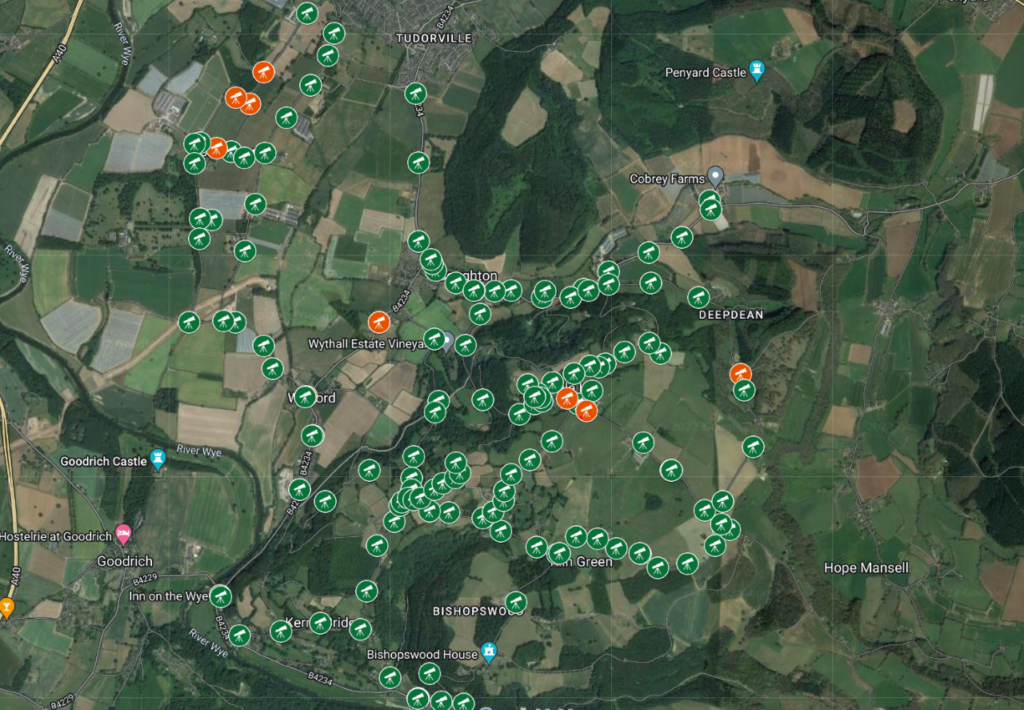
Map of the Walford and Goodrich area, showing where light pollution (orange symbols) has been recorded
Benefits of Dark Skies in Herefordshire
Increase health
Research shows light pollution has a harmful effect on people as well as wildlife. Studies show that exposure to light at night can disrupt our body’s production of melatonin. Melatonin is a brain hormone best known for its daily role in helping us to sleep.
Improve education
What better way to help children’s learning about our world than to see the stars in a clear night sky? A quiet darkness gives us pause to reflect on our relationship with the countryside and the natural world. And that’s something worth treasuring!
Expand tourism in Herefordshire
To the south west of our county, lies the world’s 5th Dark Sky Reserve, in the Brecon Beacons National Park.
With a strong light pollution policy, Herefordshire has the potential to become a haven for stargazers.
Volunteer with Dark Skies Herefordshire



